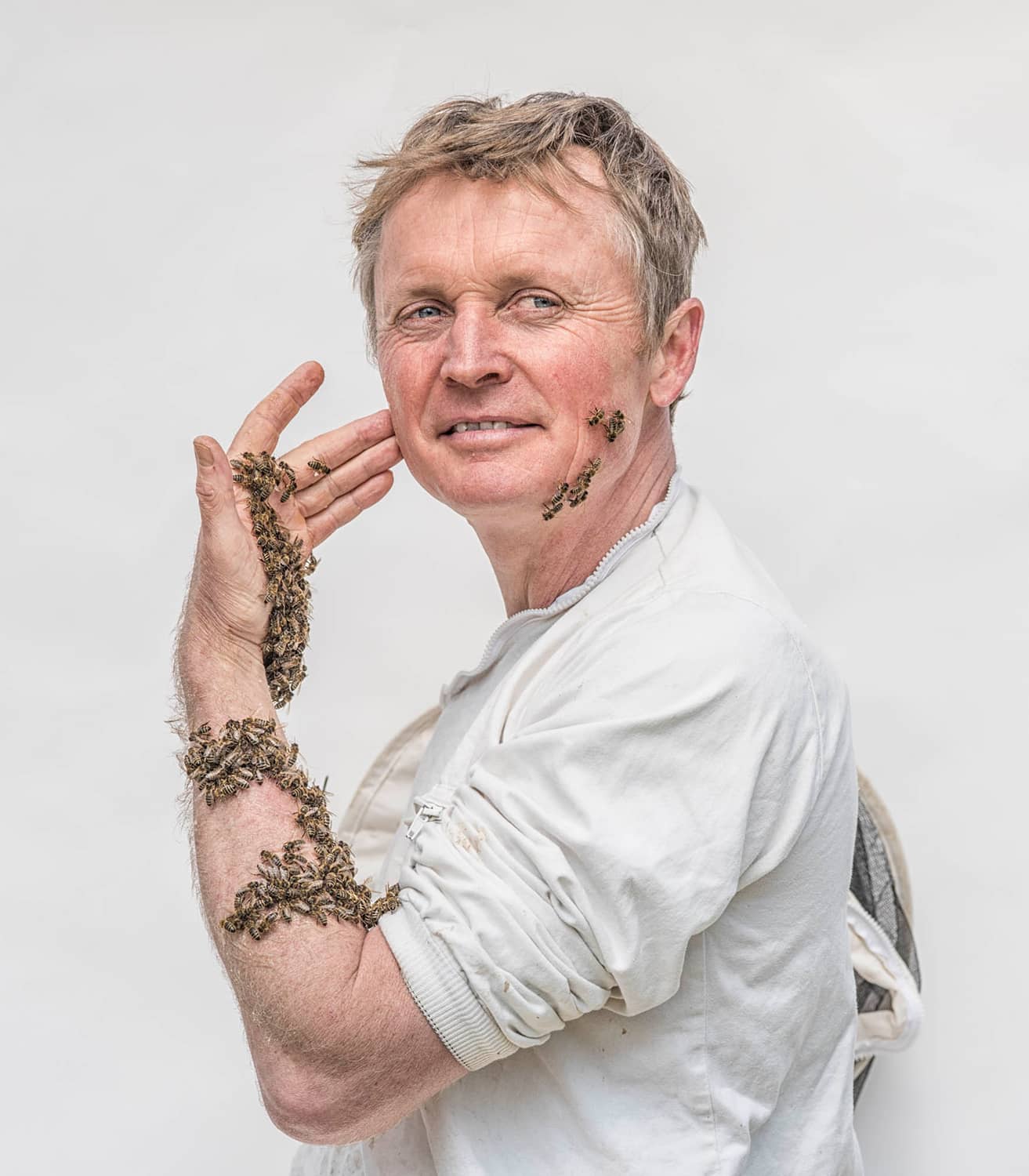The Man who gets all hot for fire
PHOTOS: Mirco Taliercio
TEXT: Tobias Müller
ARTICLE PUBLISHED
S Magazin | ISSUE 14
ORDER S MAGAZIN
Georg Lindenbauer builds perhaps the most spectacular wood-burning stoves in the world. Now he’s been discovered by the world of haute cuisine.
PHOTOS: Mirco Taliercio
TEXT: Tobias Müller
ARTICLE PUBLISHED
S Magazin | ISSUE 14
ORDER S MAGAZIN
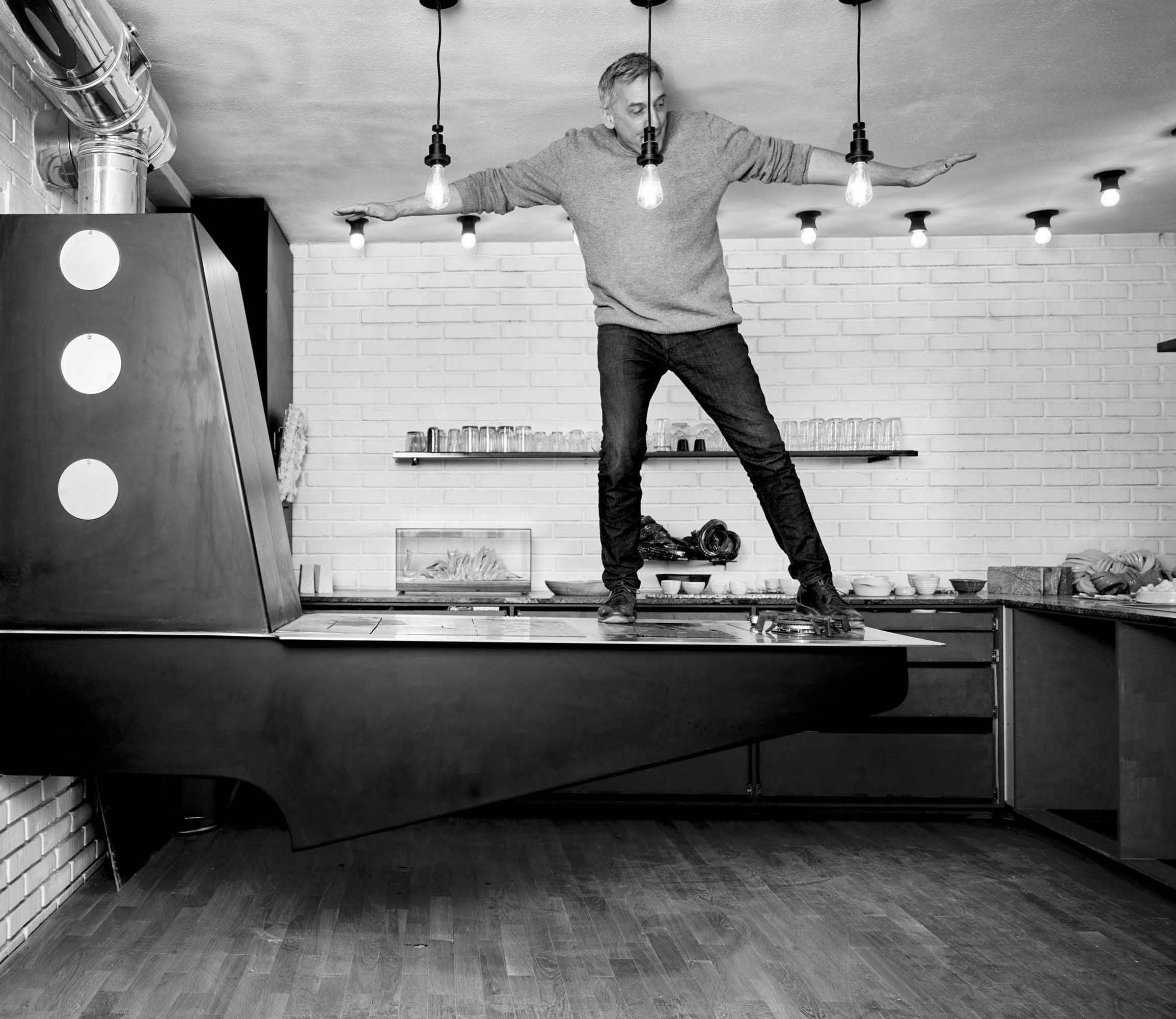
One could simply call Georg Lindenbauer a stove builder. He himself prefers to say that he is the “most significant representative for ‘heatable’ large sculptures”, and his website is called Heizobjekte.at. This is meant to sound funny, but is nevertheless meant seriously. However, you’re mistaken if you think you’re dealing with an aloof artist. If you ask him what a good stove is, he says, “It has to work and look awesome.”
His “heatable large sculptures” have as much to do with ordinary stoves as a Steirereck dish has to do with a sausage roll. Some look like organic forms grown in a galactic jungle, some like alien heads, others recall designs by Mies van der Rohe or Le Corbusier. Some almost pass for traditional tiled stoves, some have crazy surfaces, such as clay that he beat with a riding crop before drying.
He builds small stoves, just shoulder-high, and ton-weight SUV-sized structures that seem to float and rotate weightlessly. Some are so eye-catching that they take up the entire room, others disappear seamlessly into the wall so that only the fire chamber is visible.
It is therefore difficult to speak of a Lindenbauer style – “I am constantly improvising, every stove is a prototype,” he says. If you look for common features, you’re most likely to find a simple, functionalist elegance, beautiful proportions and a certain penchant for a space aesthetic reminiscent of Stanley Kubrick’s “2001: A Space Odyssey.” He does a pretty good job of “looking awesome”.
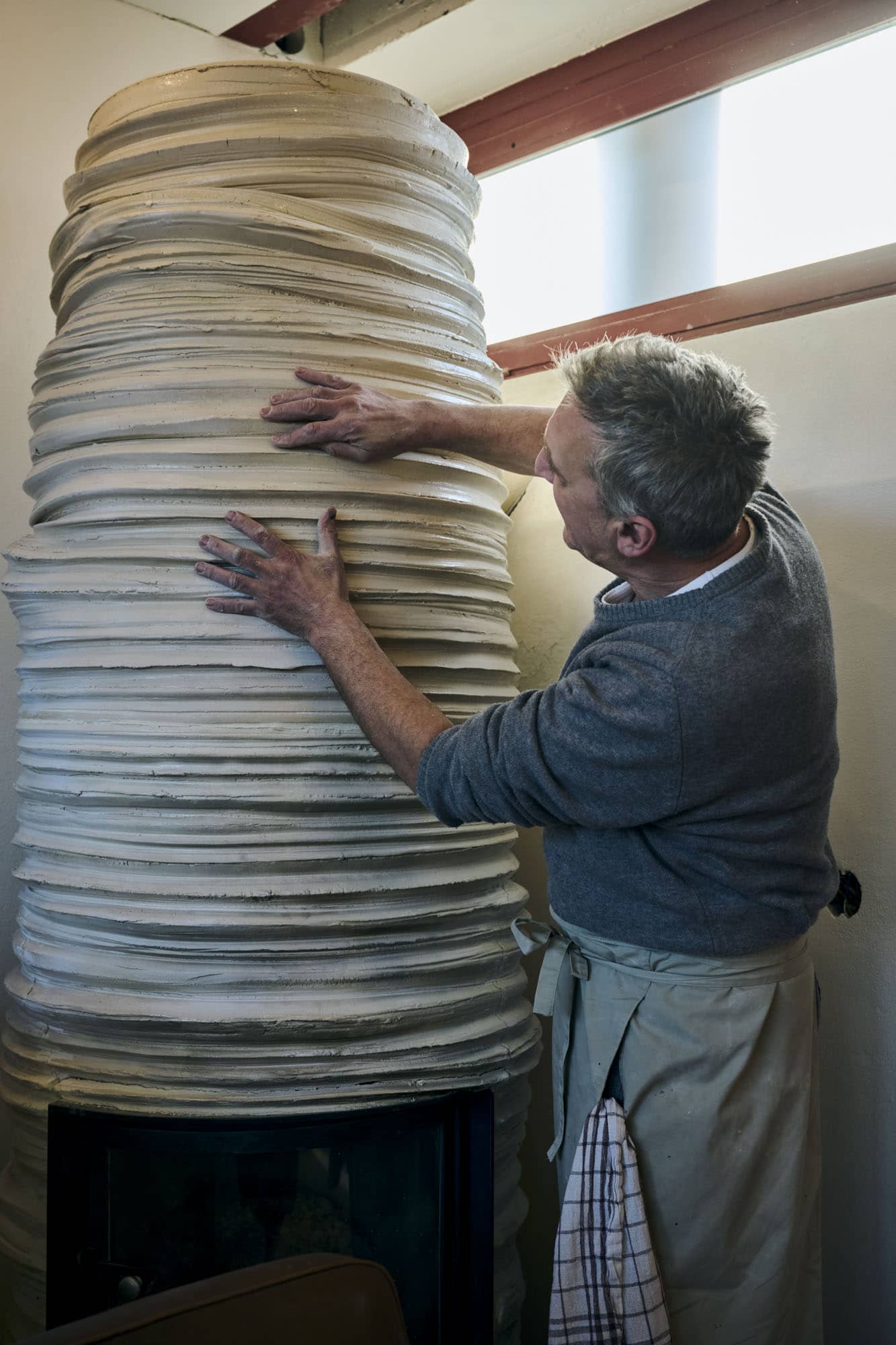
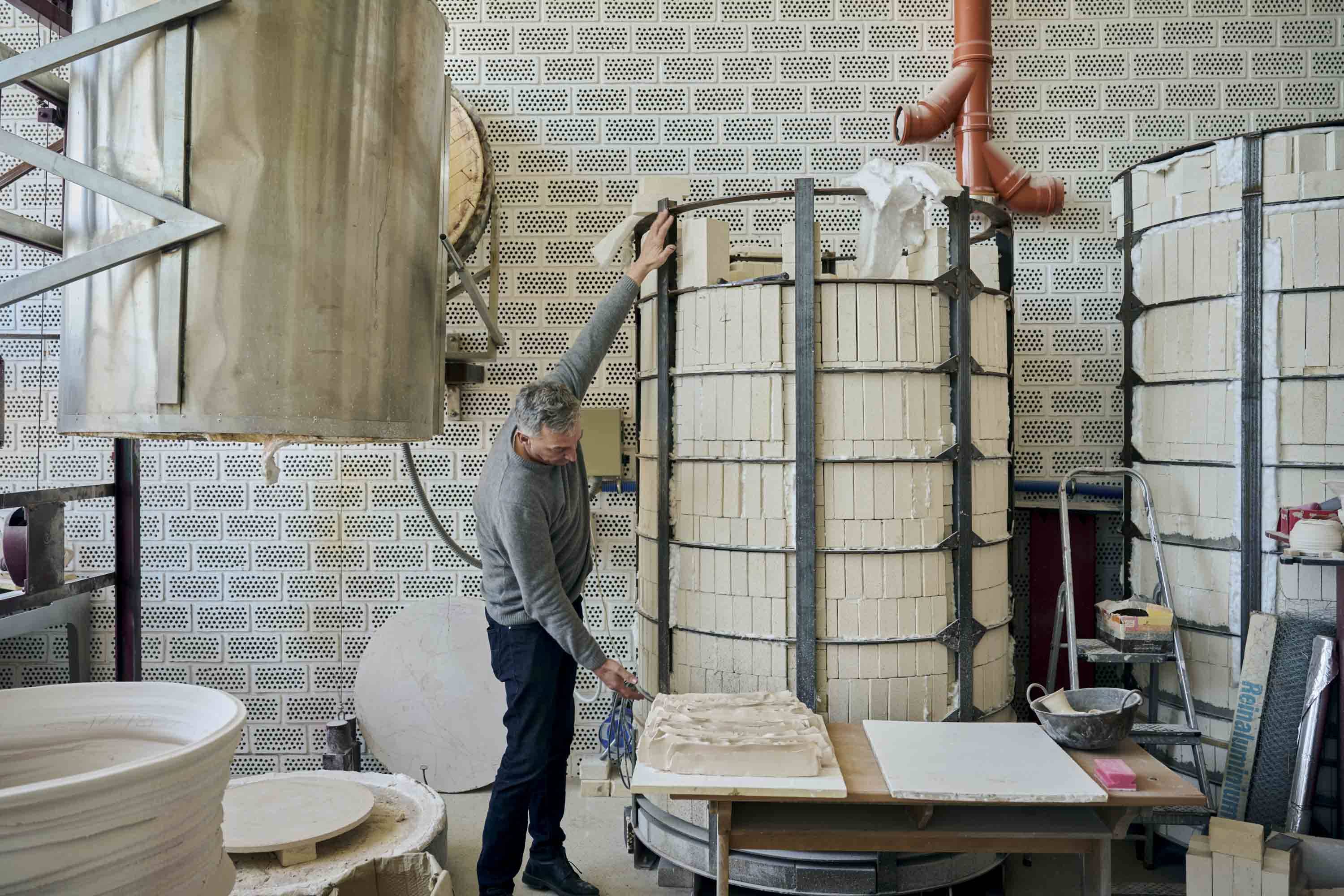
Heinz Reitbauer’s latest project could simply be called a barbecue restaurant; he prefers to call it “Schankkuchl” himself. The Steirereck boss has remodeled the Wirtshaus am Pogusch and created an open kitchen with a large communal table next to the inn. There he serves his guests almost only dishes that come straight from the fire: Grilled sturgeon with artichoke, grilled sweetbreads, fire-kissed pork tails and pheasant. The stove that makes this possible is Georg Lindenbauer’s work.
“When we rebuilt Pogusch, we definitely wanted to be able to cook with fire,” says Reitbauer. “After all, an open fireplace is the most typical thing Styria has to offer. And you can’t get the taste you get from cooking with wood with anything else.” And because the stove had to be really good, Reitbauer, the exceptional chef, called Lindenbauer, the exceptional stove maker. It wasn’t the first cooking stove for the artist – he’d already built around 20 – but it was the first of this dimension.
Lindenbauer designed a “fire machine” made of steel and brick for Pogusch, weighing 13 tons and eight meters wide. When it runs at full power, 7800 cubic meters of air pass through it every hour, the volume of six single-family homes. The construction is a bread oven, stove, grill and rotisserie all in one and is fired exclusively with wood. A powerful exhaust ensures that the aroma of grilled food stays on the food and doesn’t smoke up the guests.
The cooks have two ovens with different temperatures at their disposal, about two square meters of hot plate, four grilling basins with height-adjustable grates and an area where coals can be grilled vertically, as if for a kebab skewer. “It’s like learning to cook all over again,” Reitbauer says. “And there are a lot more possibilities than we thought.”
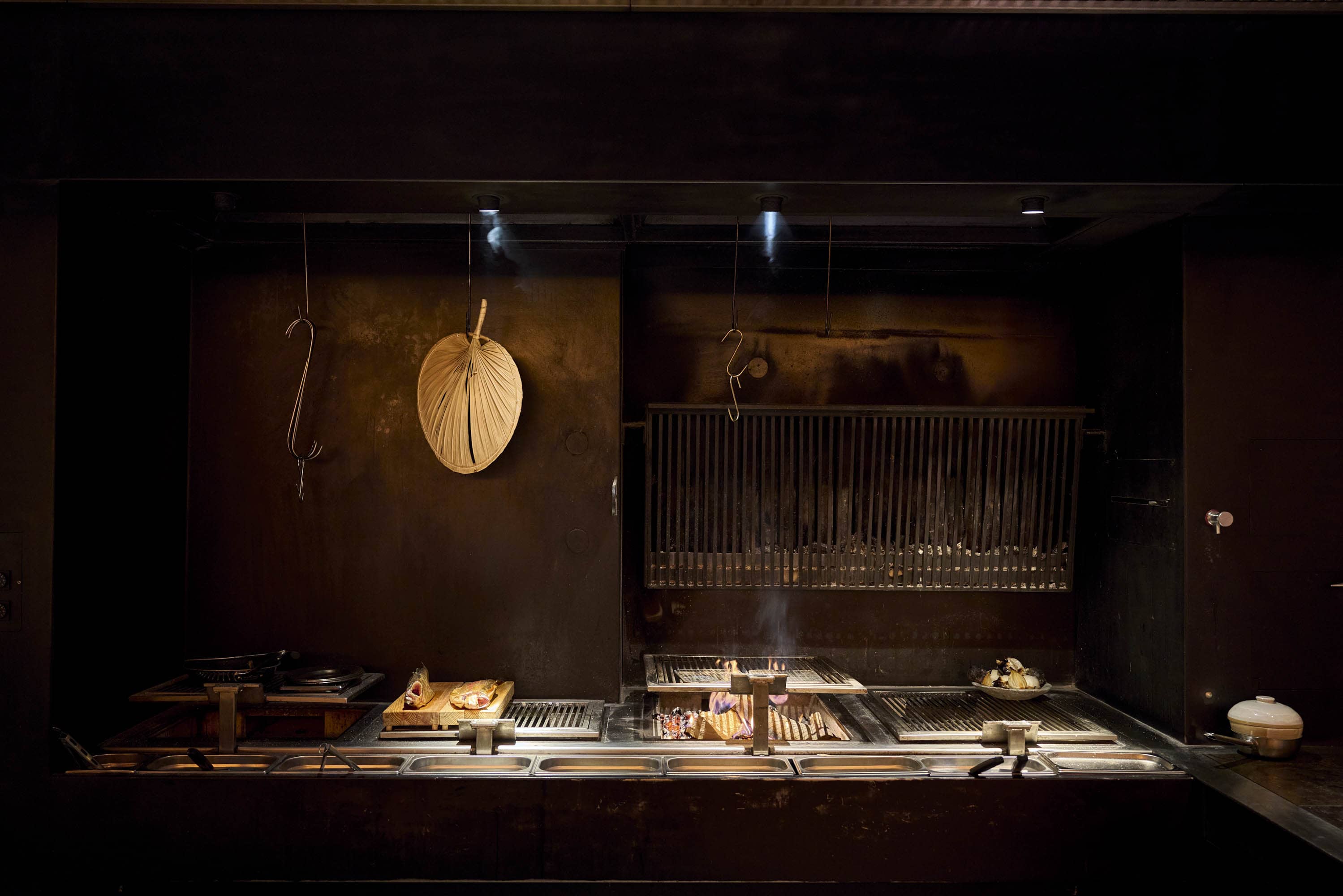
In the morning, at around 8:15 a.m., the main stove is fired up, the basis for a good day. Then it is regularly refueled and embers are shoveled here and there, or extra kindling is added with a small fan before the meat is added on top. Not only is bread baked in the baking pipes – skewers are also braised there and whole fish hang under the exhaust, which are smoked very slowly and gently here. “Analog cooking” is what chef Manuel Weissenböck calls it. “It’s a challenge, but makes you insanely proud.”
Like all Lindenbauer objects, the Poguschofen is a prototype, something never seen before. Lindenbauer and Reitbauer worked together on the model and came up with various features. Some functions, like the ovens, work great whereas some, like the heat recovery for the hot water, still need a tweak –but all in all, the oven is an amazing machine.
Applied physics is required to make the stove look awesome and be functional. As with all stoves, the size of the surface and the interior must correspond, the chimney must not be too long and not too short, and most importantly, there must be enough draft.
Behind the fireboxes, Lindenbauer has built a precisely calculated labyrinth of winding, increasingly narrow passages. As this means that the same amount of hot air has to pass through narrower and narrower openings, the flow velocity becomes higher, just like at a narrow point in a river. This ensures that the fire blazes properly.
Lindenbauer has built hundreds of furnaces over the 35 years since he started doing his job. The stove builder says that there about 60 in Klosterneuburg, where he lived for a long time, while the rest are dotted around the world. That gives you a pretty good idea of how much the man works and how quickly he lives, thinks, speaks and moves. Sometimes he sleeps only three hours a day for months at a time, doing nothing but pottering, firing, eating, drinking and smoking. “I have an extreme capacity for suffering,” he says.
“That could also be in the Guggenheim!”
Georg Lindenbauer
Lindenbauer is one of those people who create rather than slave. Once he lets go, he begins to shape the world around him, to change it and to design it according to his ideas. His kilns are created from scratch. He works with steel, bricks, wood, ceramics, or whatever else comes his way. He cuts, welds, saws, potters and fires his own ceramic tiles and bricks, mixes glazes, builds and draws models. For one project, he kneaded 425 tons of clay by hand because machines just can’t do it that well.
He even builds the kilns in which he hardens the ceramic parts himself – there’s no other way, because they can’t be bought in the size he needs for his meter-high sculptures. And he also built a good part of his studio himself.
Lindenbauer attended a ceramics school in Graz, but his successful stove builder career is thanks to his self-confidence and a nice coincidence. In 1985, as a young man, he hitchhiked to Vienna, and the man who gave him a ride asked him if he could build a tiled stove. Lindenbauer, who had never built a tiled stove before, said yes. When he put up photos of his work at his next ceramics exhibition, he sold seven stoves in one weekend. Since then, taming fire has not released him from its spell.
He has become even more self-confident over the years because the world, when he wants to shape it, usually obeys him. “That could also be in the Guggenheim,” he says of one of his works, and he doesn’t shy away from comparisons with Wassily Kandinsky and Paul Klee. When, at 27, he was offered an assistantship at the University of Applied Arts in Vienna, he turned it down. He did not want to take less than a professorship.
Anyone who eats at the Schankkuchl at Pogusch must admit: a Lindenbauer oven must indeed be something special if such food can be prepared with it. It therefore looks as if he will be building a few more “cooking items” in the future – since the oven at Pogusch, more and more chefs have been calling him. Max Stiegl, boss at the Purbach estate in Burgenland, has already ordered a bread oven with a cooking unit and Richard Rauch from Bad Gleichenberg “Steira Wirt” is also interested in a Lindenbauer stove. After all, they work, and look awesome.
Stories
Stories of people driven by love and passion for their craft.
The articles can be found in the current 'S Magazine'. Every four months you can find new stories here.
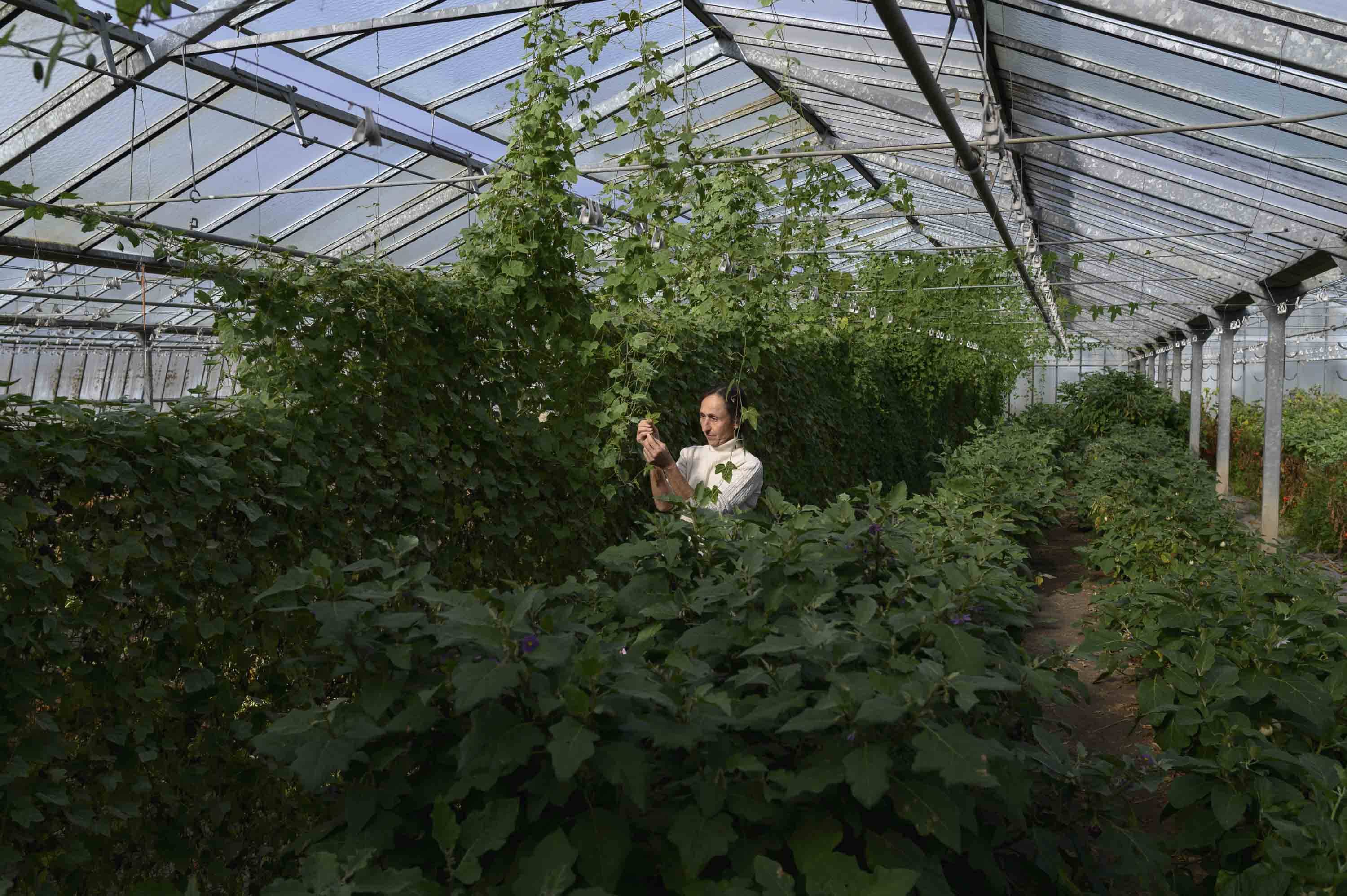
ISSUE 12
You reap only later
